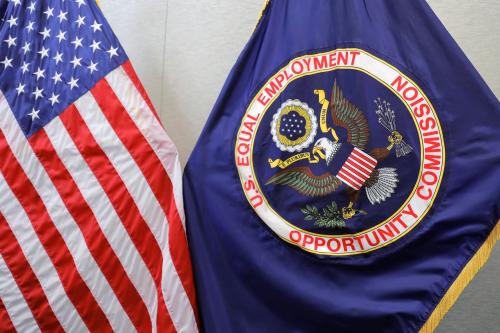The impact of the recession on children can be hard to see. Unemployment statistics released monthly by the Bureau of Labor Statistics tell us the number of unemployed persons 16 and older – 15.3 million in December 2009 – but do not tell us much about the families of the unemployed. I estimate that 1 out of 9 American children, or 8.1 million children, are living with an unemployed parent, based on December’s unemployment numbers and annual data on family status of unemployed men and women. It turns out that almost one-third (31 percent) of unemployed are parents with children. (My estimate of the number children living with an unemployed parent and the percentage of unemployed who are parents has been revised downward since the blog was first posted in January 2010).
Children whose parents are unemployed are at increased risk for experiencing poverty, homelessness and child abuse. Parental unemployment also can have long-term consequences, particularly if it leads to the family entering poverty: a recent analysis found that children who enter poverty during times of recession are less likely to complete high school and attain a bachelor’s degree than children who weather a recession without entering poverty.
Monitoring child poverty statistics is another important way to see the impact of the recession on children. My colleagues Emily Monea and Isabel Sawhill have estimated that the number of children in poverty may increase by 5 million or more as a result of the recession, above a 2007 base of 13.3 million poor children. So far, the number of poor children has reached 14.1 million, but these statistics are for 2008 and so do not yet fully capture the impact of the recession. Updated poverty statistics will not be released by the Census Bureau until next August or September, but there are already signs that the number of poor children is on the rise.
Between August 2008 and August 2009, the number of children receiving food stamps, or what are now called Supplemental Nutrition Assistace Program (SNAP) benefits, increased by roughly 3.4 million. I view this growth as a barometer pointing to not yet visible increases in child poverty.
In one sense, the rise in SNAP benefits can be viewed positively, as a sign that the safety net is working: families suffering economic decline as a result of the recession are receiving assistance so that their children do not go hungry. On the other hand, the rise in SNAP caseloads signals the rising needs of families, particularly families with children. Helping parents to meet the needs of the children in these families may require more than a monthly nutrition assistance benefit averaging $133 per person.
The Brookings Institution is committed to quality, independence, and impact.
We are supported by a diverse array of funders. In line with our values and policies, each Brookings publication represents the sole views of its author(s).



Commentary
The Recession’s Impact on Children
January 15, 2010